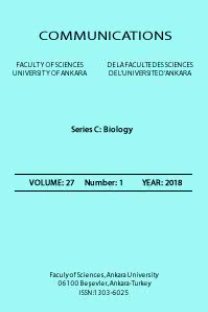SKULL SEXUAL DIMORPHISM APPEARS IN TOY RABBITS
Oryctolagus cuniculus, neoteny, paedomorphism, progenesis
___
Borgi M and Cirulli F (2013). Children’s Preferences for Infantile Features in Dogs and Cats. Human-Animal Interaction Bulletin 1 (2): 1–15.Parés-Casanova PM, Sofiane K, Medina A (2018). Diferente desarrollo cefálico según tipo de conejo. Revista Ciencias Veterinarias 36(2): 15–21.
Denoël M, Jolly P (2000). Neoteny and progenesis as two heterochronic processes involved in paedomorphosis in Triturus alpestris (Amphibia: Caudata). Proceedings of the Royal Society B: Biological Sciences 265: 1481–85. https://doi.org/10.1098/rspb.2000.1168.
Skulachev VP, Holtze S, Vyssokikh MY, Bakeeva LE, Skulachev MV, Markov AV, Hildebrandt TB and Sadovnichii VA (2017). Neoteny, prolongation of youth: From naked mole rats to “Naked Apes” (Humans). Physiological Reviews 97(2): 699–720.
Bonino N and Donadio E (2010). Parámetros corporales y dimorfismo sexual en el conejo silvestre europeo (Oryctolagus cuniculus) introducido en Argentina. Mastozoologia Neotropical 17(1): 123–127.
Rohlf FJ (2010). Digitalized Landmarks and Outlines. Stony Brook: Department of Ecology and Evolution, State University of New York, New York, 2:26.
Ozkadif S and Eken E (2016). Craniometric measurements of New Zealand rabbits skull from three-dimensional reconstruction images. Journal of Animal and Veterinary Sciences 2(1): 9–14.
Toro Ibacache MV, Manriquez Soto G, Suazo Galdames I (2010). Morfometría geométrica y el estudio de las formas biológicas: de la morfología descriptiva a la morfología cuantitativa geométrica. International Journal of Morphology 28 (4): 977–990.
Bookstein FL (1991). Morphometric tools for landmark data. Geometry and Biology. Cambridge University Press.
Zelditch M, Swiderski D, Sheets H, Fink W (2004). Simple size and shape variables: Bookstein shape coordinates. Geometric Morphometrics for Biologists: A Primer, Elsevier Academic Press London, 51-72.
Klingenberg CP (2011). MorphoJ: An integrated software package for geometric morphometrics. Molecular Ecology Resources 11(2): 353–357.
Hammer Ø, Harper DAT, Ryan PD (2001). PAST v. 2.17c. Palaeontologia Electronica 4(1): 1–229.
Soriguer RC (1980). El conejo, Oryctolagus cuniculus (L.), en Andalucía Occidental: Parámetros corporales y curva de crecimiento. Doñana, Acta Vertebrata 7(1): 83–90.
Godfrey LR and Sutherland MR (1996). Paradox of peramorphic paedomorphosis: Heterochrony and human evolution. American Journal of Physical Anthropology 99(1): 17–42.
Frynta D, Baudyšová J, Hradcová P, Faltusová K and Kratochvíl L (2012). Allometry of sexual size dimorphism in domestic dog. PLoS One 7(9): 5–10.
Bidau CJ and Martinez PA (2016). Sexual size dimorphism and Rensch’s rule in Canidae. Biological Journal of Linnean Society 119: 816–830.
Remes V and Szekely T (2010). Domestic chickens defy Rensch’s rule: sexual size dimorphism in chicken breeds. Journal of Evolutionary Biology 23: 2754–2759.
Drake AG and Klingenberg CP (2010). Large‐scale diversification of skull shape in domestic dogs: disparity and modularity. The American Naturalist 175(3): 289–301.
Andrews K, Lowe J and Mccormick WD (2015). Skull morphology of the domestic dog in relation to cephalic index, in Royal Veterinary College, London, 69th AVTRW Annual Conference.
Denoël M, Ivanovic A, Džuki G and Kalezic ML (2009). Sexual size dimorphism in the evolutionary context of facultative paedomorphosis: insights from European newts. BMC Evolutionary Biology 9(1): 278.
- ISSN: 1303-6025
- Yayın Aralığı: Yılda 2 Sayı
- Başlangıç: 1943
- Yayıncı: Ankara Üniversitesi
SYNTHESIS OF OPEN-CHAIN SUGAR DERIVATIVES AS ANTICANCER AND ANTIMICROBIAL AGENTS
PUTRESCINE AS A PROTECTIVE MOLECULE ON DNA DAMAGE AND DNA METHYLATION CHANGES IN WHEAT UNDER DROUGHT
Esra ARSLAN, Guleray AGAR, Murat AYDIN
BIOLOGICAL ACTIVITIES OF ADIANTUM CAPILLUS-VENERIS COLLECTED FROM DUHOK PROVINCE (IRAQ)
Falah Saleh MOHAMMED, Mustafa SEVİNDİK, Celal BAL, Hasan AKGÜL, Zeliha SELAMOGLU
ROLE OF SODIUM NITROPRUSSIDE ON MITIGATION OF SALT STRESS IN SWEET CORN
Fateme MANSHOORI, Mohammad ARMIN, Hamid MARVI
INVESTIGATION OF THE ANTIMICROBIAL ACTIVITY OF Vitis vinifera L. BOĞAZKERE
INVESTIGATION OF MYXOMYCETES (MYXOMYCOTA) IN KIRIKHAN (HATAY PROVINCE)
Hayri BABA, Erdal CENNET, Mustafa SEVİNDİK
SKULL SEXUAL DIMORPHISM APPEARS IN TOY RABBITS
Pere M. PARÉS-CASANOVA, Lluis LLOVERAS, Jesus NADAL
THE FIRST RECORD OF CREPIDOTUS CROCOPHYLLUS FROM TURKEY
